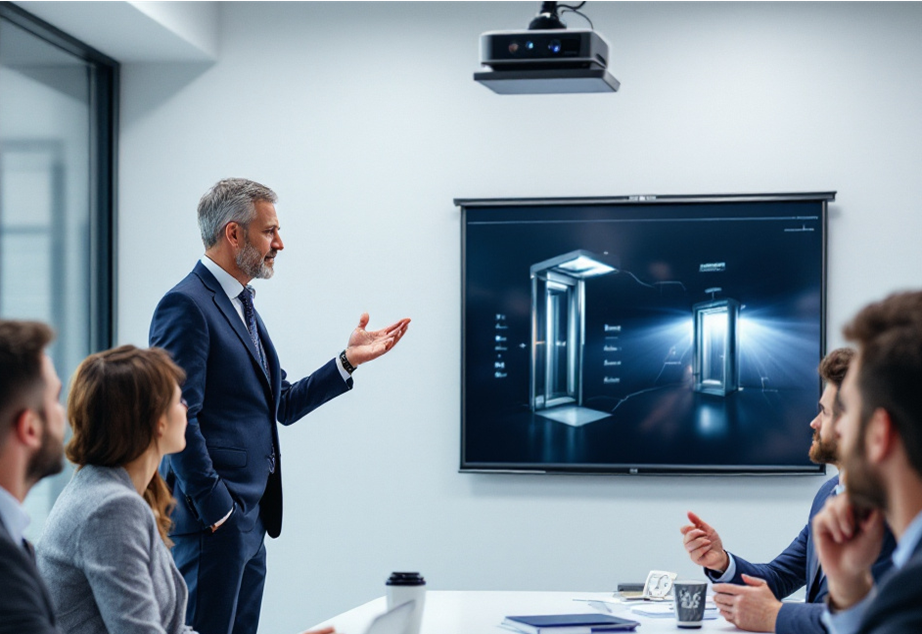Elevators, Escalators & Travelators – After Water Damage: A Guide for Building Owners & Managers
Cyclone Alfred is predicted to bring large amounts of rainfall and possible flooding to many regions in Southeast Queensland and Northern New South Wales. In its wake, this may cause significant damage to infrastructure, including Elevators, Escalators, and Travelators which our urban cities and towns increasingly rely on.
If you are an owner or manager of a building, it is crucial to act swiftly and effectively to ensure the safety and functionality of your building’s Vertical Transport (VT). This guide outlines the essential steps to take when dealing with water or flood-affected Elevators, Escalators, and Travelators.
Immediate Actions: Water Damaged Equipment |
– Notify Your Maintenance Service Provider
– Do Not Use the Elevators
– Do Not Move Escalators & Travelators
– Assess the Damage
Notify Your Maintenance Service Provider
Immediately inform your maintenance service provider and request for a technician to inspect the equipment and confirm if it has been affected by water.
Do Not Use the Elevators
If you have taken precautionary steps and parked the Elevator on higher floors to prevent water from lower floors from contacting the cabin, moving the Elevator without confirming that there is no water in the pit may result in the underside of the Elevator car being submerged. Water can also be splashed around the shaft as the compensation chain, belts, or ropes are affected by water, and the Elevator travels up and down. This may also affect the counterweight.
Do Not Move Escalators & Travelators
In the case of Escalators and Travelators, if the water ingress occurs from the bottom of the equipment, this means that only the equipment in the bottom pit and some of the steps and pallets in the bottom return would be affected. If the equipment is turned on before the water is pumped out of the pits or cleared, the water can gather in the underside of the steps and pallets and then deposit and splash the water throughout the truss, including the top pit, impacting both the electrical and mechanical components.
This will certainly result in greater repair costs and downtime as more equipment may have to be replaced before it can safely return to service.
Assess the Damage
Ask your maintenance service provider to conduct a thorough inspection of the equipment to assess the extent of the damage. Look for signs of water ingress in the shafts, control panels and machinery spaces. As a minimum for Elevators, this would include the top of the Elevator car, the door entrances of the levels where the water may have entered and the cabin and pits. For traction Elevators it is essential that the ropes and belts are inspected, and any signs of water damage is well documented.
IMPORTANT: Some of the safety equipment of the Elevator is located underneath the Elevator cabin and inside the pit, if water affects these components they may not function as designed in the event of an emergency.
New Steps to Manage Water Damaged Elevators, Escalators and Travelators |
– Document the Damage and Repairs
– Contact Your Insurance Company
– Avoid Premature Approvals
– Getting the Equipment Back in Operation
Document the Damage and Repairs
If water has entered the shaft and pit, it is essential to document exactly what has been affected by water, the condition of that equipment, and the associated risks.
Take as many photos and videos of the water-affected equipment as possible for future insurance claims. Keep detailed records of the damage, including photographs and written reports. Document all repair work carried out, including the names of the contractors and the dates of service.
IMPORTANT: Do not operate the equipment when you are trying to document the damage.
Contact Your Insurance Company
Once you have confirmed that the equipment has been affected by water, contact your insurance company immediately. Again, do not operate the equipment as this may cause further damage.
Avoid Premature Approvals
Where possible, avoid approving quotations and proposals from maintenance service companies until your insurance company’s assessors have inspected the equipment and reviewed the documentation and evidence. This will ensure that you are not left out of pocket and are prepared for any future disputes or rejection of claims.
Getting Equipment Back in Operation
Once you have established the extend of the water damage, sought relevant approvals from your insurance company and approved the works with your maintenance service provider, it may still take some time for supply of spare parts and for repairs to be carried out.
Ask your maintenance service provider to give you a program of works including scope and timeline. In some cases the maintenance service provider can carryout some temporary measures to get the equipment running while you wait for parts and repairs.
By following these steps, you will ensure that the process of returning your water damaged Elevators, Escalators and Travelators is well managed and reduce the risks that are associated with insurance and possible our of pocket repair costs.
Need more advice?
Contact one of our professional consultants: info.aus@elevatingstudio.com


